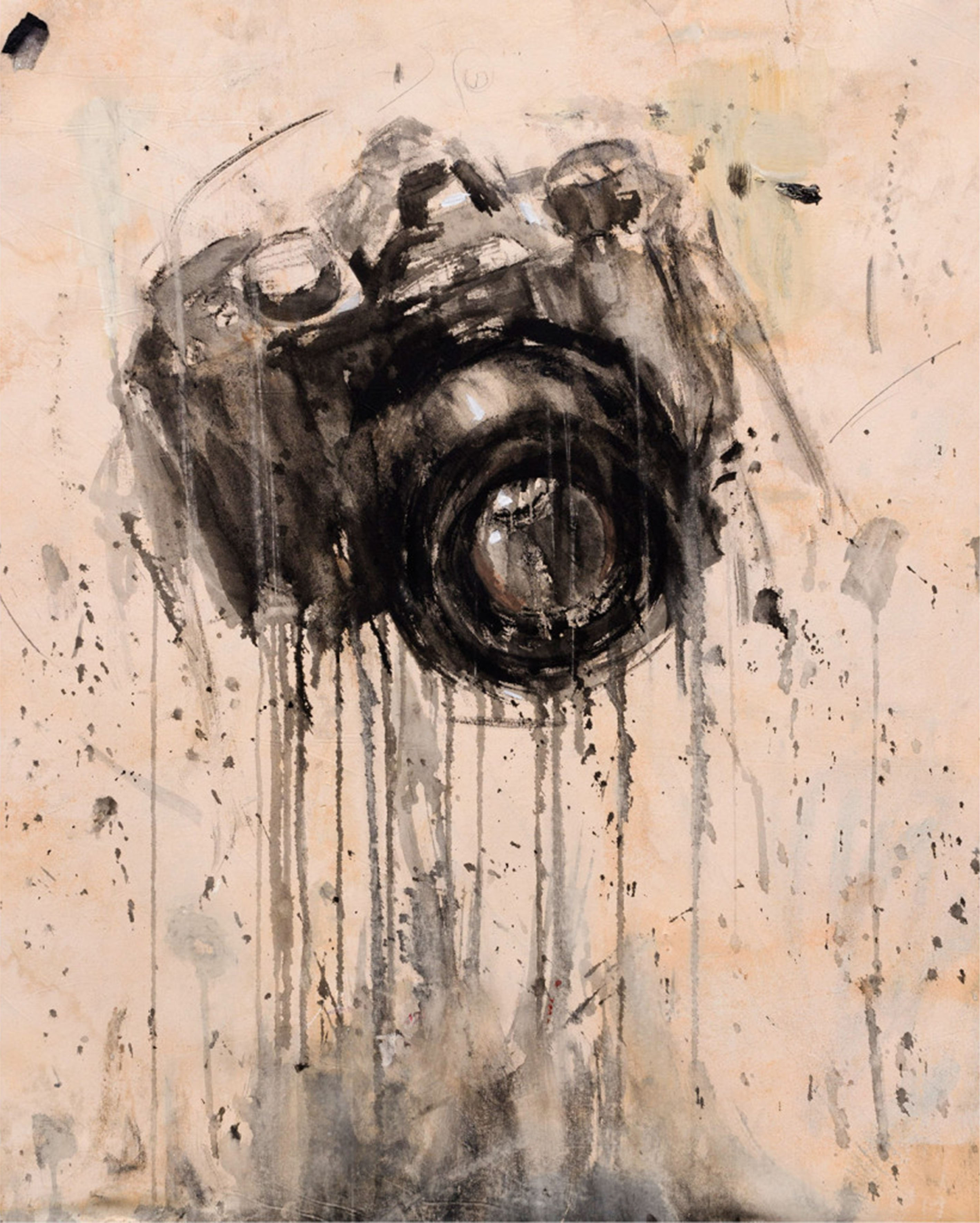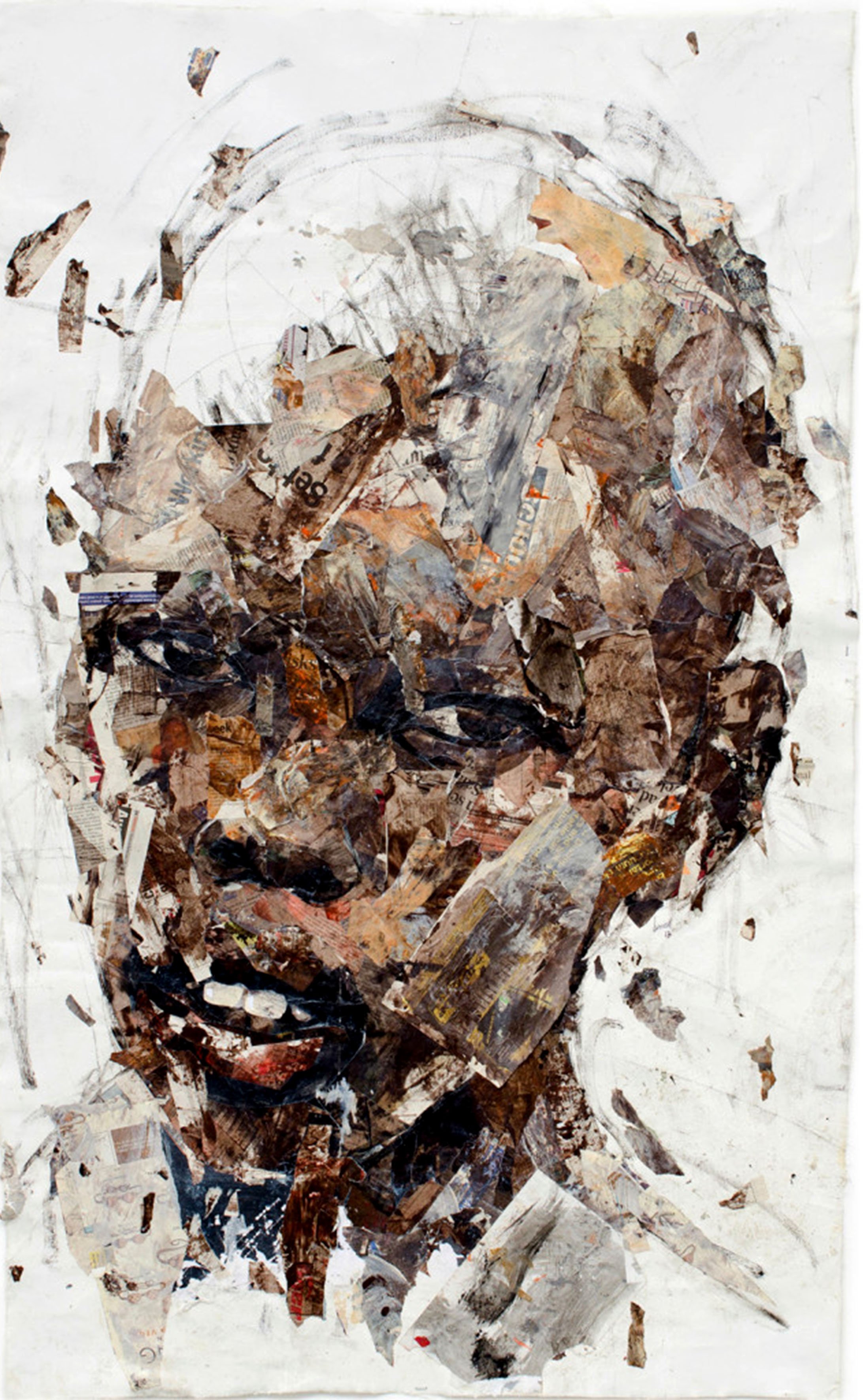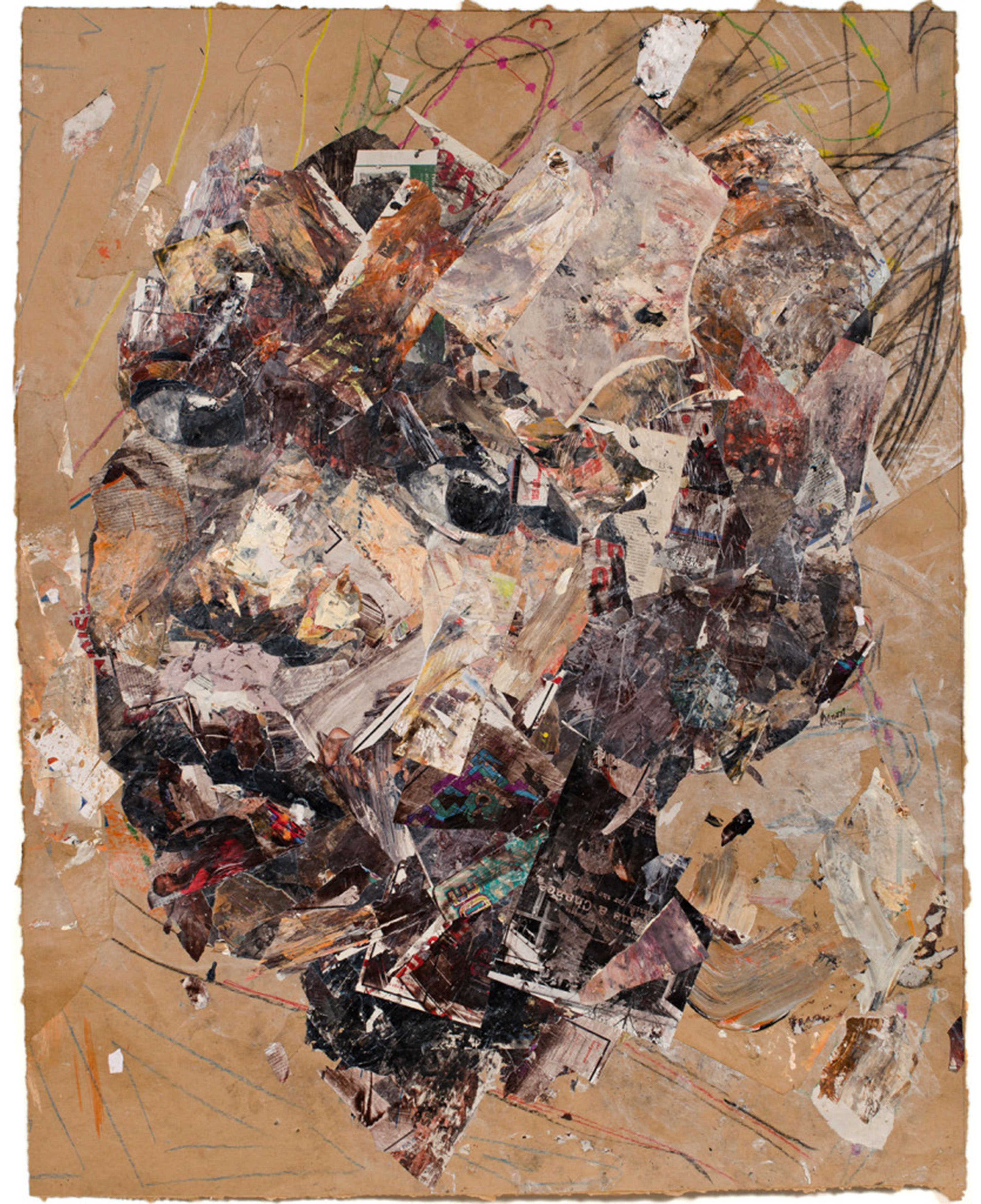Wealth within: Uganda-born artist Benon Lutaaya, the love child of abstraction and realism, died recently at the age of 34. (Supplied)
Benon Lutaaya left Uganda in 2011. On his person he carried talent, pride and a knack for problem-solving in addition to his material possessions. After graduating with a bachelor’s degree in vocational art and design with education from Kyambogo University in Kampala, he began plotting his way out of Uganda because of what he considered its uninspiring artistic landscape.
He refused to follow suit when his peers decided to teach or to practise in an environment that confused visual art with crafts. Instead, he faithfully applied for every award, scholarship and residency in the hope of attaining a career-defining exodus. His determination landed him a catapulting six-month residency at the Bag Factory in Johannesburg in 2011.
Almost eight years later, Lutaaya had managed to bag awards and international recognition. Some of his wins included the Lovell Gallery competition, an Ithuba Arts Fund grant, an Arts & Culture Trust visual arts award, the Face of African Youth Foundation award in Germany and a residency from the Southern African Foundation for Contemporary Art (Saffca).
A few weeks ago, he died after having been diagnosed with cancer. The Mail & Guardian contacted friends, colleagues, collectors and those who were a combination of these things to map out the legacy left by the artist.
Described by Percy Zvomuya in a 2012 M&G piece as the love child of abstraction and realism, Lutaaya’s depictions blend painting and collages to create colourful, inviting and textured takes on portraiture.
Some say his work touches on the continent’s issues of immigration, political turmoil, violence and poverty, while others see it as a means to capture the intricacies and vulnerabilities of Africa’s post-colonial existence.

Moment 1 (Benon Lutaaya)
Lutaaya preferred not to associate his work with reality. His mixed-medium practice was informed by a tug of war between his urge to create and his lack of resources.
Saffca is a nonprofit organisation that facilitates the global movement of visual arts from Southern Africa. As a cofounder of Saffca and a collector-turned-friend, Pierre Lombardt remembers Lutaaya telling him how, three months into his stay in South Africa, he had used up the paint supplies that had been given to him during his Bag Factory residency. “Somewhat too proud to ask for more, he decided that he was going to use those to create collages. He used the garbage of his own action of painting to transcend them into artwork,” said Lombardt.

Garbage of action: Artworks by Benon Lutaaya, made with a unique sensibility that repurposed rubbish to create illustrative works with presence, as is evident in Boy with Buck Teeth
The “garbage of action” to which Lombardt refers is a combination of newspapers and magazines on which Lutaaya had previously prepared his colours or cleaned his brushes. More than a sense of pride, the act of using what he had speaks to what those who knew him refer to as a sensitive sense of material’s potential.
One of the people who witnessed this development in his art was Pat Mautloa, a mentor whom Lutaaya encountered in his early days at the Bag Factory. On recalling the emergence of collage, Mautloa said: “Initially Benon was very, I would say, illustrative. Obviously, the space and places where you spend most of your time influence your work and the rhythm of your work. When he came here, it deconstructed everything. His work developed immensely. He kept the idiom that he wanted to express but he changed the mode. He’s adopted this effervescent way of rendering these figures.”
The artist-and-collector relationship between Lutaaya and Lombardt came about when Lombardt wanted to negotiate the price of an artwork titled My Memories.

My Memories (Benon Lutaaya)
“We went for lunch and after lunch we went to his studio at Bag Factory. That’s how we started the relationship. Every six weeks, I went to have a look at his progress while doing a little bit of mentoring and bringing him books to read on art-related issues,” adds Lombardt.
Yet very early in their relationship the insights Lombardt gained from Lutaaya urged him to drop his imperialist and saviour-like approach toward the artist. This was brought about by Lutaaya’s “kind assertion” of his agency. The result was an equalised dynamic — an approach Lutaaya exercised to keep his agency and peace of mind as an independent artist.
“Being penniless with a big name in the industry is not what I was striving for. My work had to be socially impactful and yet personally satiating, financially and psychologically,” Lutaaya once explained to Zvomuya.
Although he did not belong to a gallery, the artist was open to taking part in exhibitions and if they sold his work, they were welcome to cash in on the commission. The bulk of his work was sold independent of this process.
Having worked alongside Lutaaya at the Bag Factory as well as at Saffca, curator Ruzy Rusike says it was “unheard of” that Lutaaya managed to sell so much work without belonging to a gallery. She remembers watching Lutaaya sell works after studio visit conversations.
In a 2015 M&G feature written by Gloria Nakajubi, Lutaaya spoke about how he had to teach himself how to “communicate and build lasting relationships with people, a trait I previously lacked”, before going on to say: “I know exactly where all the art pieces I have sold over the last five years are … my clients [who] have since become personal friends.” The result was a sustainable, altruistic model that served both parties.
But that was not enough for Lutaaya. An important part of his practice was sharing his learnings, which was why he established The Project Space.
The Project Space is a nonprofit laboratory that aims to advance African contemporary art and cultural entrepreneurship through programmes such as the Young Female Residency Award, the Women in Africa residency and the Entrepreneurs residency.
Lutaaya’s colleagues and friends describe the organisation as his masterpieces because of its potential to give international opportunities to African artists, especially women, whom galleries may not consider.
Lombardt quotes one of Lutaaya’s views: “The wealth is within yourself. Don’t ask the system to look after you, go look within yourself what you can give to others.”
With continued donations to a variety of causes, as well as his establishment of a platform for the creative and economic development of artists, Lutaaya, indeed, danced to this tune.
After his 34-year run, Lutaaya is survived by his two children, a body of work spanning more than a decade and The Project Space.